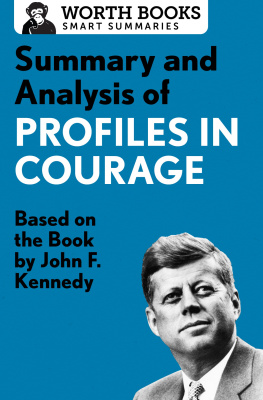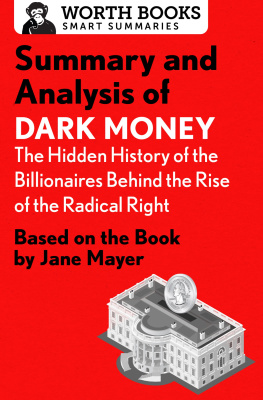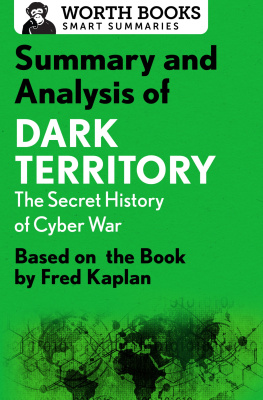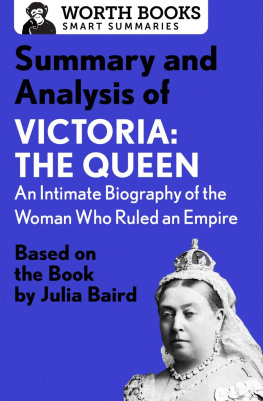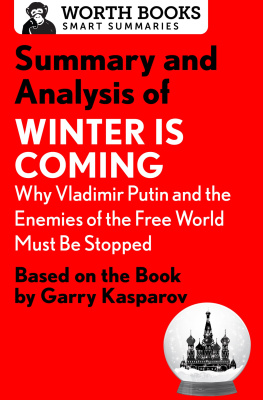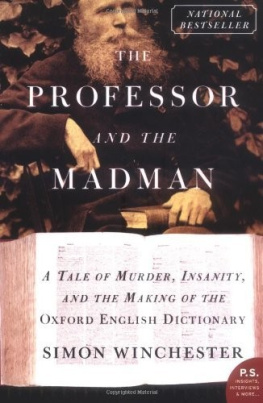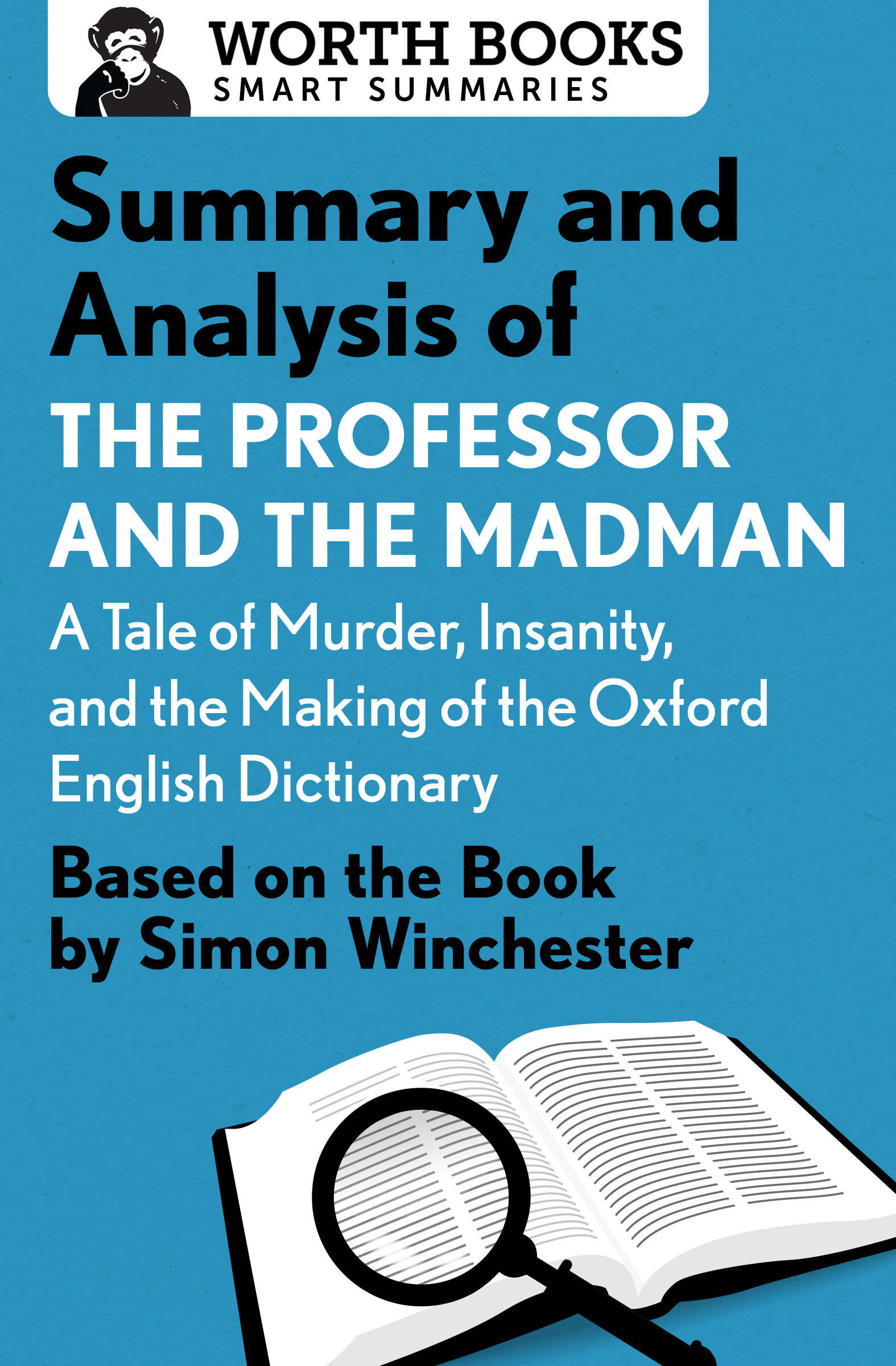Summary and Analysis of
The Professor and the Madman
A Tale of Murder, Insanity, and the Making of the Oxford English Dictionary
Based on the Book Simon Winchester

Contents
Context
The Oxford English Dictionary ( OED ) stands as the uncontested paragon of English language scholarship. But one particular piece of its history has long remained untold: the story of the friendship between Dr. James Murray, the dictionarys first editor, and Dr. W. C. Minor, a volunteer contributor who submitted more than ten thousand quotations to the compilation of references while imprisoned in a hospital for the criminally insane. The details of their extraordinary relationship were kept in sealed government files and secret hospital records for a century. After gaining access to those previously unseen files and correspondence, Simon Winchester, a longtime journalist thrilled by Minor and Murrays collaboration, pieced together the incredible true story of two men and the illustrious dictionary they helped create.
With The Professor and the Madman: A Tale of Murder, Insanity, and the Making of the Oxford English Dictionary. Winchester depicts Victorian England as a whole while reconstructing the lives of Murray and Minor, whose paths converged in an unusual and providential way. The book, which sold more than a million copies, also provides a history of English lexicography. The story this unlikely pair is more than delightful historical triviait illuminates the history of one of the English-speaking worlds greatest literary achievements: the Oxford English Dictionary.
Overview
What did the first editor of the Oxford English Dictionary have in common with a criminally insane American imprisoned in an English asylum? Quite a lot, as it turns out. The Professor and the Madman tells the tale of two men: Dr. James Murray, the venerated philologist and lexicographer who compiled much of the first OED , and Dr. W. C. Minor, a former US Army surgeon serving time at the Asylum for the Criminally Insane, Broadmoor, for murder. Murray and Minorthe titular professor and madmanforged a professional relationship and, ultimately, a friendship that profoundly influenced the making of the OED and, consequently, the entire English literary world.
The compilation of the OED , which began in 1857, was one of the most formidable and ambitious projects undertaken in the history of the English language. Victorian-era England vitally needed a comprehensive dictionaryEngland had become a major colonial power, and the English language was on the verge of becoming the worlds lingua franca. The existing dictionaries were insufficient, as they included only some words, not all.
The London Philological Society, an elite group of scholars, theologists, and linguists, decided to heed the call for a better dictionary. One member, Richard Chenevix Trench, proposed a dictionary that would include each word in the English language, its definition, and quotations illustrating its meaning and usage. The task was an enormous one, and it took nearly twenty years for the Philological Society to find a publisher in the Oxford University Press. The highly esteemed James Murray was named editor, and he immediately put out a public call for volunteers to contribute possible quotations to the OED.
William Chester (W. C.) Minor, confined at the Broadmoor, saw and answered the call. Equipped with a considerable collection of books in his cellas well as intelligence, diligence, and free timehe immediately began to comb through them and pick out appropriate quotations. Over the course of twenty years, he contributed more than ten thousand citations to the OED. He and Murray struck up a regular correspondence.
Murray was unaware that his contributor wrote to him from inside a mental institution. When Murray found out Minors true identityby chance, in conversation with a fellow scholar acquainted with Minors storyhe went to visit him, and the two men remained friends for years despite Minors ever-deteriorating mental health. Neither Murray nor Minor lived to see the final publication of the Oxford English Dictionary the first edition wasnt completed until 1928but they were instrumental in its ultimate success as the one of the greatest achievements in the history of the English language.
Summary
Preface
According to a popular myth, one of the strangest meetings in lexicographical history occurred in 1896. Dr. James Murray, editor of the Oxford English Dictionary , traveled to Crowthorne, England, to meet one of the dictionarys most prolific volunteer contributors, a man named Dr. W. C. Minor. Murray and Minor had corresponded for twenty years, but they had never met in person. Murray arrived at a large red brick mansion, which he assumed was Minors house. He soon found out that it was, in fact, the Asylum for the Criminally Insane, Broadmoor. Minor had been an inmate there for more than twenty years.
Need to Know: The true tale of Murray and Minor was contained in secret government files that had been locked away for more than one hundred years. The Professor and the Madman tells their story.
1. The Dead ofNight in Lambeth Marsh
On February 18, 1872, three shots rang out in the moonlit streets of Lambeth Marsh, London. Firearms were uncommon in Victorian England, but perhaps rarer still were the circumstances that occasioned these particular gunshots: US Army surgeon W. C. Minor had murdered a British worker named George Merrett for no apparent reason.
Minor, who descended from a wealthy New England family, had arrived in England the previous year after serving during the Civil War. He suffered from severe paranoid delusions. At his murder trial, he told the court that an Irish nationalist group was hunting him and that he shot George Merrett out of what he thought was self-defense.
The murder trial concluded with a verdict of not guilty by reason of insanity. In a decision that would greatly affect the English literary world, the court sent Minor to the Asylum for the Criminally Insane, Broadmoor.
Need to Know: The American Civil War resulted in the most casualties of any US war in history. Often unmentioned, however, is the psychological harm it caused. Shell shockwhat we now call posttraumatic stress disorder (PTSD)was common, and many conscripts suffered in asylums once the war was over. W. C. Minor was not a unique case, which makes the impact he ended up having on history even more astounding.
2. The Man WhoTaught Latin to Cattle
Unlike other English dictionaries, the OED includes not just definitions of more than 500,000 words, but quotations that illustrate their various uses and nuances. The OED tells the life story of every term, from its first publication to its more recent uses. There are some disagreements, of course. For instance, take protagonist , which some dictionaries say can only refer to one character in a tale, while the OED states may be used in the plural.
Interestingly, The Professor and the Madman has two protagonists : W. C. Minor and a Scottish man named James Augustus Henry Murray.
Murray was born to a poor family, and he educated himself after leaving school at age fourteen. A curious and ambitious young man, he taught his younger brothers about the stars, spoke Latin to livestock, and participated in archaeological digs. He acquired an incredible range of knowledge and was particularly skillful in the realm of philology, the study of language. Murray was prevented from pursuing a career in academia by unfortunate family circumstances: the illness of his first wife, Maggie, and the death of their child when he was twenty-seven. He took a job in a bank, but resumed his studies on the side.



